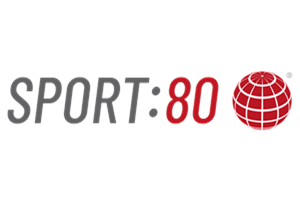Any club that offers a sport or activity to children or young people has a responsibility to safeguard them. To make sure that they are all kept safe from harm.
The Child Protection in Sport Unit (CPSU) provides excellent advice and support around safeguarding children. This includes a Self-Assessment Tool which takes you through the Standards for safeguardingchildren in sport. There are simple questions for each of the nine Standards elements which help you assess what your organisation needs to do.
In addition, your national governing body will have requirements, guidelines and procedures around safeguarding for you to follow. So contact them to find out what their specific requirements are and what tools and policies they have to support you.
Essentially, to protect children and young people you need a:
- safeguarding policy
- code of conduct
- preventative arrangement
- reporting abuse procedure and systems
- monitoring system
Safeguarding policy
A safeguarding children policy makes clear to everyone what’s required in relation to the protection of children.
It helps foster a safe and positive environment for children and shows that a club is taking its duty of care seriously.
Safeguarding policies can vary a little depending on your sport or activity but all policies must state:
- what the policy aim is, i.e. to safeguard children
- good practice guidelines
- guidance about the use of film, photography and social media
- information on the recruitment and training of staff and volunteers
- procedures in place to respond to allegations.
It’s got to be written clearly and easily understood, approved by your clubs committee or management structure, publicised and promoted throughout the club and compulsory for all staff and volunteers.
It’s also very important that the policy is reviewed regularly or whenever there is a major change in the organisation or in relevant legislation. This will ensure you are keeping up-to-date with best practice.
Code of conduct
A code of conduct should set out what an acceptable standard of behaviour is and help to promote good practice. Individuals should be required to sign-up to abide by the relevant code and it should be made clear that failure to comply will result in action being taken by the club/organisation.
These standards of behaviour set a clear benchmark for everybody – so that they can understand what is acceptable and what is not. They can also help minimise opportunities for abuse and may prevent unfounded allegations from being aired.
There should be codes for:
- parents
- volunteers/staff
- coaches
- children
The Child Protection in Sport Unit has good examples of codes of conduct and these should be consulted when putting together your own.
For adults, the code must set out the ethics of the organisation and provide guidance as to the expected behaviour of adults towards children.
It’s essential that a culture among the the staff and volunteers comes through – that children are listened to and respected.
It can also be helpful to have guidelines where relevant, depending on your sport, on the care of disabled children or young people regarding appropriate and inappropriate touch.
There must also be guidance on the acceptable behaviour of children towards other children and appropriate procedures, including disciplinary measures, for dealing with any unacceptable behaviour.
Any code of conduct must also make clear that discrimination or prejudice of any form is unacceptable and this can apply to: race, culture, age, gender, sexuality, religion or disability.
Preventative arrangements
Prevention systems and procedures consist of measures to help minimise the possibility of children and young people being abused by those in a position of trust.
By putting safeguards in place, your club can minimise potential risks that adults may pose to children and most importantly help prevent abuse.
So what systems need to be in place?
Well firstly, and perhaps most obviously, you need to have policies and procedures in place for recruiting staff and volunteers who are going to have contact with children.
These procedures assess the person’s suitability for the role.
For this, clubs should get at least two appropriate references for all staff and volunteers and evidence of identity and any relevant qualifications must be seen.
Make sure that you actually check the references to ensure the prospective staff and volunteers have the experience they say they have.
Having a formalised try-out session can also be a good way to determine how they may be around the children.
Adults should also complete a self-declaration about any previous convictions they may have in line with relevant legislation. This is a good procedure to use for people that do not meet the eligibility criteria for any other form of check.
Adults in roles which provide eligibility for criminal records checks should be required to undertake these in line with relevant legislation. You can find out more about the current DBS system here.
Clubs should ensure that safeguarding training is available to all staff and volunteers at a level appropriate to their responsibilities. You can find out more about training that’s available on the Child Protection in Sport Unit’s website.
Reporting abuse procedures and systems
Having systems and procedures in place should provide clear step-by-step guidance on what action clubs will take in different circumstances.
Again support and guidance will be in place from your NGB on how to manage allegations and what procedures they would like you to go through so they can help you manage the process.
The procedures will likely clarify roles and responsibilities and the lines of communication both within the club and to outside authorities and ensure that complaints are recorded and dealt with.
Procedures and systems to deal with complaints also make sure that clubs comply with the relevant legislation and, most importantly, ensure a prompt and appropriate response to concerns about a child’s welfare.
So what needs to be in place?
Firstly, all clubs should try to have a designated person who has clearly defined responsibilities in relation to child protection.
This is really important as it ensures someone is always making sure the club has the appropriate safeguarding systems in place.
Often this person will be the key link with the NGB and could be the ‘Club Welfare Officer’.
Next, there should be clear and unambiguous procedures in place for child protection which are available to all parents, children, staff and volunteers.
These must provide step-by-step guidance on what action to take if there are concerns about a child’s safety or welfare.
These must include:
- who the procedures apply to
- definitions of abuse
- how to respond to a child who says either they or another child is/are being abused
- how to respond to allegations against a member of staff/volunteer or another young person
- how to respond to concerns about a child’s welfare where no specific disclosure/allegation is made
- what the appropriate use of video and photography at events is
- contact details for local social services and police, including out of hours contacts.
It is important here that there has also been a process set out for dealing with complaints about unacceptable behaviour towards children from parents and other children, with clear timescales for resolving the complaint.
Finally, clubs must make sure that they comply with all the relevant legislation in regards to recording incidents, concerns and referrals as well as securely storing them.
Monitoring System
Safeguarding policies and procedures have to be implemented right throughout the club.
It’s no good having the perfect policy if it’s not being applied. So checks are needed.
All incidents, allegations of abuse and complaints must be recorded and clubs should have arrangements in place to monitor compliance with child protection policy.
Safeguarding polices should be revised ideally at least every three years to accommodate the clubs changing needs and experience but also for changes in legislation.
Views of those involved inside and outside the club can be very helpful and therefore clubs should have mechanisms in place to consult children as well as parents as part of any review.
Safeguarding children in sport is a fundamental part of running a sports club.
Everybody has been daunted with the task of developing a safeguarding policy but there is lots of help out there.
Your national governing body, the Sport and Recreation Alliance and the ChildProtection in Sport Unit all have guidance available so make use of it.
Remember, putting the right policies, protections and procedures in place can help make sure you keep children in sport safe.








